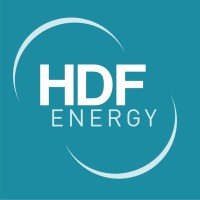Proton Technologies targets hydrogen at $0.30/kg

Proton Technologies Canada Inc, an energy technology company, has been working on a project which reduces the cost of hydrogen to around US$ 0.30/kg. The idea is both simple and unique. The aim is to extract hydrogen from a deep-down underground hydrocarbon reservoir and leave the carbon content inside the well.
The company said that it resumed separating hydrogen in late February at their project in Saskatchewan, Canada. The separation unit is for multi-year hydrogen filter longevity and iteration testing. The company plans for hydrogen truck-loading later this year. Proton Technologies anticipates a thousand tonnes/day of hydrogen from the construction of a large air separation plant.
The process involves injecting oxygen into oilfields which trigger a reaction. As a result, hydrogen is separated from carbon, whereas hydrogen is extracted up to the surface, leaving all carbon in the ground. The process is similar to steam methane reforming (SMR), but the process completes underground.
Proton Technologies told H2Bulletin that the process needs 20% oxygen which it takes from the air. The oxygen goes into the wellhead at -100 to – 150 Celcius, then warm on the way down, arriving at the fuel deposit at a similar temperature as the fuel (reservoir temperature).
“The main chemical reactions are similar, but unlike SMR, our fuel is free, which is oil that is still in the ground, which can be obtained inexpensively because it is someone’s abandonment liability, and we do not need to build a reaction vessel. Nature provides this, as the reactions occur within the pore space between rock grains deep in the earth,” Proton Technologies told H2Bulletin.
To keep the production cost structure of hydrogen below natural gas, the late-life oilfields would be ideal. The company combines In-Situ gasification and hydrogen selectivity techniques to ensure cost-effective production of hydrogen in oil fields.
The company further added that it uses palladium alloys. The only thing that can dissolve into and through them is pure hydrogen. Some hydrogen will react again, for example, by forming steam, which can re-react through the water gas shift reaction to produce hydrogen again. The aim is for net-reactions on a large-scale basis.
An air separation unit in South Africa that produces 5,500 tonnes/day of oxygen was recently completed for €200 million (US$ 240 million). “We feel that off the shelf solutions like this can create a levelized hydrogen price well below 50 cents/kg,” the company added.
The air separation unit can be powered by a portion of the produced hydrogen, which can further cut the carbon intensity and make it competitive against green hydrogen.
